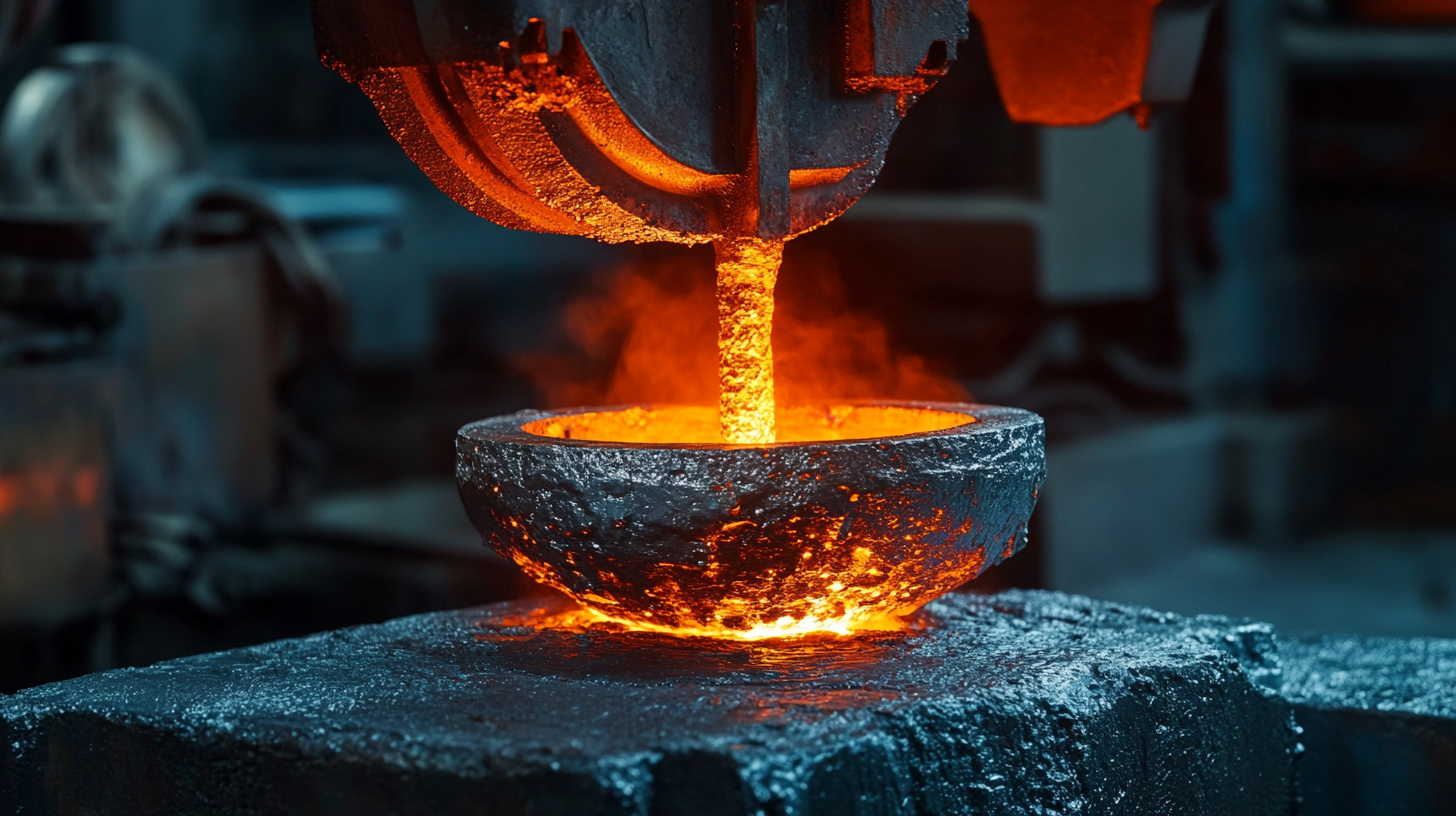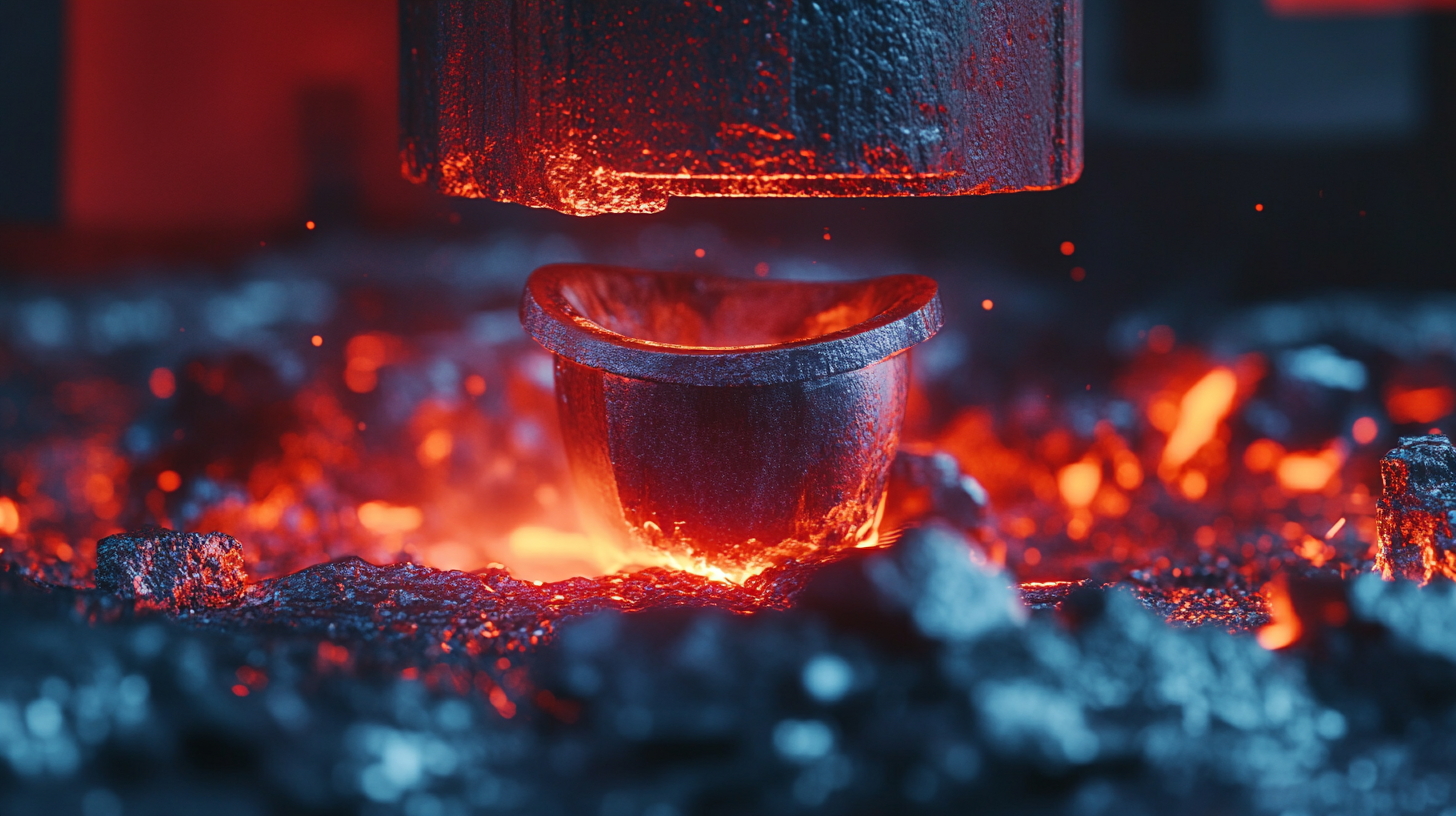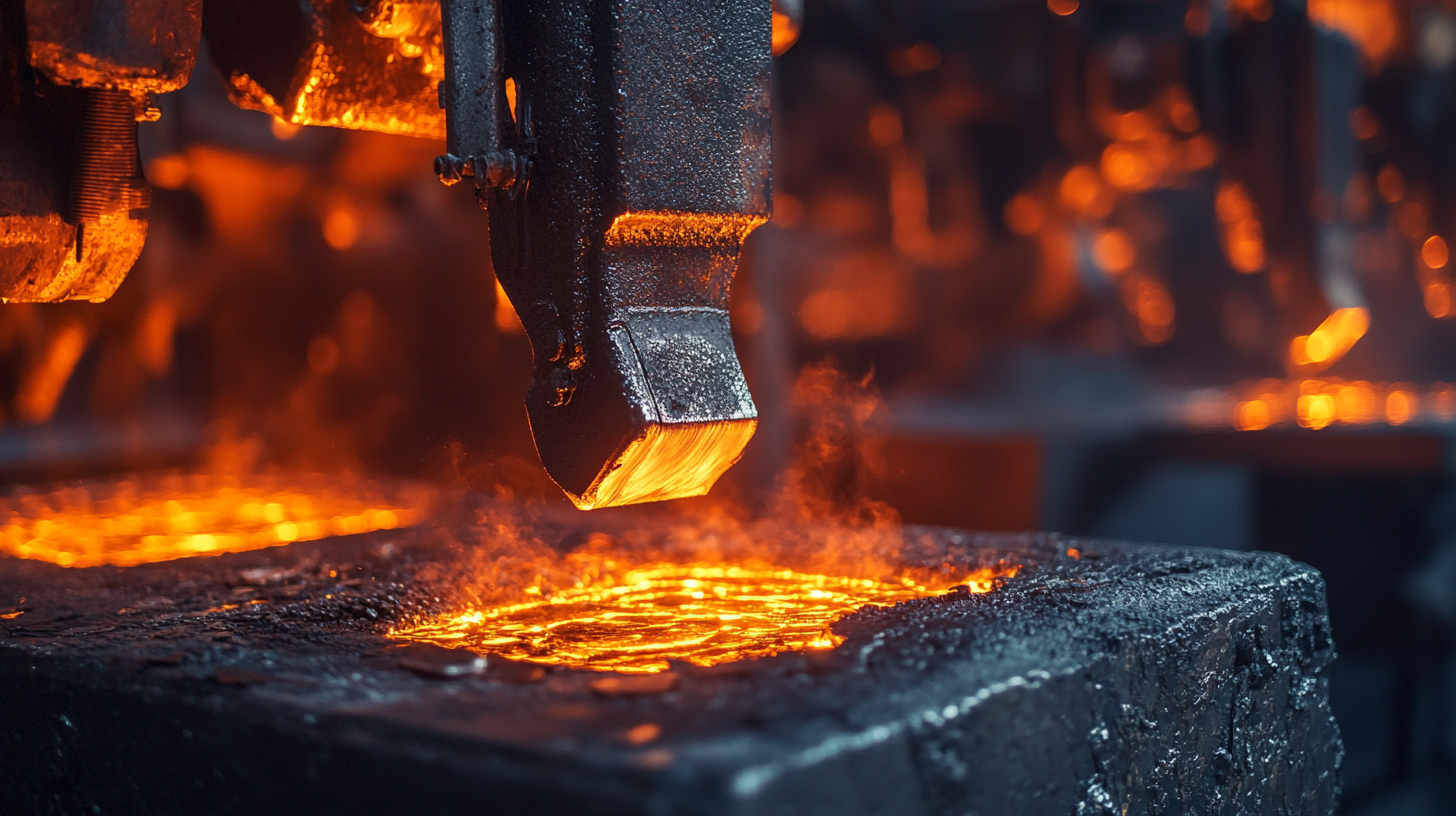


In the rapidly evolving landscape of manufacturing, the demand for lightweight and durable materials has led to a significant focus on aluminum casting, which is projected to reach a market value of $24.8 billion by 2027, growing at a CAGR of 5.6% from 2020 to 2027. However, the complexities and limitations inherent in traditional aluminum casting processes, such as high production costs and extended lead times, have prompted manufacturers to explore alternative methods.

Innovations in materials and casting technologies are paving the way for enhanced manufacturing efficiency, while simultaneously addressing sustainability concerns.
This ultimate guide delves into the best aluminum casting alternatives that not only optimize production processes but also improve product performance, ultimately supporting manufacturers in meeting the increasing demands of today's market.
The limitations of aluminum casting in manufacturing have prompted the exploration of alternatives to enhance efficiency. While aluminum casting is renowned for producing complex geometries and achieving excellent surface finishes, it grapples with challenges such as long cycle times and tooling costs. As noted in the Metal Casting Market Size & Share Report, the industry is projected to reach a size of approximately $210 billion by 2030, indicating the growing demand for innovations that can streamline production processes.
Additive manufacturing is emerging as a transformative force in this landscape. Notably, advancements in liquid metal 3D printing techniques have gained traction, offering new avenues for part customization and rapid prototyping. A recent study highlights that additive manufacturing can significantly reduce material waste, which is a critical factor in sustainability efforts within the industry. Moreover, developments like SPEE3D's Nickel Aluminum Bronze alloys indicate the potential for maritime applications, showcasing how additive techniques can complement traditional casting methods in terms of versatility and speed.
The automotive sector exemplifies this synergy, as seen with the concept of gigacasting. This technique enables the production of large, intricate aluminum components in a single piece, reducing assembly time and costs. As the industry embraces these innovations, the interplay between additive manufacturing and metal casting continues to evolve, creating opportunities for enhanced manufacturing efficiency and improved product performance.

As the manufacturing industry continually seeks ways to enhance efficiency, exploring alternatives to aluminum casting becomes increasingly relevant. While aluminum offers numerous advantages, such as lightweight and corrosion resistance, alternative materials can yield enhanced casting performance tailored to specific applications. For instance, magnesium alloys present a promising substitute; they are lighter than aluminum and boast excellent strength-to-weight ratios, making them ideal for the automotive and aerospace sectors.
Another noteworthy alternative is zinc die casting, which provides superior surface finish and dimensional accuracy. Zinc alloys also exhibit excellent fluidity during the casting process, allowing for intricate designs and reduced material waste. Additionally, the use of thermoplastics in casting is gaining traction, as they offer design versatility, lower energy consumption during production, and the potential for recycling. By identifying and integrating these alternative materials, manufacturers can streamline operations, reduce costs, and improve the overall performance of their products.
When considering manufacturing efficiency, evaluating aluminum casting alternatives becomes essential for businesses aiming to reduce costs while maintaining quality. According to a report by Grand View Research, the global aluminum casting market was valued at approximately $36.82 billion in 2020 and is expected to grow at a compound annual growth rate (CAGR) of 7.3% from 2021 to 2028.
However, alternative materials such as magnesium alloys and advanced composites are gaining traction due to their lighter weight and superior mechanical properties, which can lead to lower energy consumption in downstream processing.
Cost-effectiveness is a critical factor when exploring these alternatives. For instance, research published by the Journal of Materials Processing Technology highlighted that using magnesium alloys can reduce overall manufacturing costs by up to 20% compared to traditional aluminum casting.
Additionally, they exhibit a significant reduction in life cycle costs due to extended durability and lower maintenance needs. As manufacturers face increasing pressure to optimize operations and cut expenses, investing in these alternatives could prove beneficial, making a compelling case for the reevaluation of aluminum casting methodologies in favor of potentially more efficient options.
In the modern manufacturing landscape, the quest for efficiency often drives innovators to explore alternatives to traditional aluminum casting methods. Among these alternatives, innovative techniques such as 3D printing, investment casting, and sand casting are gaining traction for their ability to minimize waste and maximize precision. 3D printing, for instance, allows for rapid prototyping and the production of complex geometries that are difficult to achieve with conventional methods. By using additive manufacturing, companies can significantly reduce material usage and lead times, paving the way for a more sustainable production approach.
Furthermore, investment casting has emerged as a compelling alternative, especially for components requiring high dimensional accuracy and excellent surface finish. This method enables the creation of intricate shapes with minimal post-processing, making it ideal for industries like aerospace and automotive. Alongside, sand casting continues to be adapted with modern techniques, improving both efficiency and quality in large-scale production. By integrating these innovative methods, manufacturers can not only enhance their operational efficiency but also meet the evolving demands of the market, thereby establishing a competitive edge in the industry.
| Casting Method | Material Used | Advantages | Applications | Efficiency Improvement (%) |
|---|---|---|---|---|
| Investment Casting | Silicon Alloys | High precision, good surface finish | Aerospace components, art pieces | 15% |
| Die Casting | Aluminum Alloys | Rapid production, complex shapes | Automotive parts, appliance housings | 20% |
| Sand Casting | Green Sand | Versatile, low cost | Marine components, large machinery | 10% |
| Lost Foam Casting | Expanded Polystyrene | No need for core, less waste | Heavy machinery, automotive components | 18% |
| Permanent Mold Casting | Aluminum | Good mechanical properties | General engineering | 12% |
 In recent years, manufacturers have begun to investigate alternatives to
aluminum for casting processes, leading to remarkable success stories across various industries. A notable case is the automotive sector, where companies like Ford have shifted to magnesium alloys for certain components. According to a 2022 industry report by the Lightweighting Automotive Group, this transition not only reduced the weight of vehicles by 20% but also improved fuel efficiency by up to 15%, showcasing the tangible benefits of material switching.
In recent years, manufacturers have begun to investigate alternatives to
aluminum for casting processes, leading to remarkable success stories across various industries. A notable case is the automotive sector, where companies like Ford have shifted to magnesium alloys for certain components. According to a 2022 industry report by the Lightweighting Automotive Group, this transition not only reduced the weight of vehicles by 20% but also improved fuel efficiency by up to 15%, showcasing the tangible benefits of material switching.
Another compelling example can be found in the aerospace industry, where Boeing has successfully incorporated thermoplastic composites in their aircraft designs. Their investment in these materials has resulted in a 10% decrease in manufacturing costs and enhanced performance metrics, as highlighted in a study by the Aerospace Materials Institute. The report emphasizes that the ability to mold complex shapes with ease and durability opens new design avenues that aluminum simply cannot match, significantly enhancing overall production efficiency.
These case studies underscore the importance of innovation in material selection, which can lead to weight reduction, cost efficiency, and superior performance. As industries seek to optimize their manufacturing processes, the exploration of alternatives to aluminum is becoming increasingly essential, paving the way for smarter and more sustainable practices.